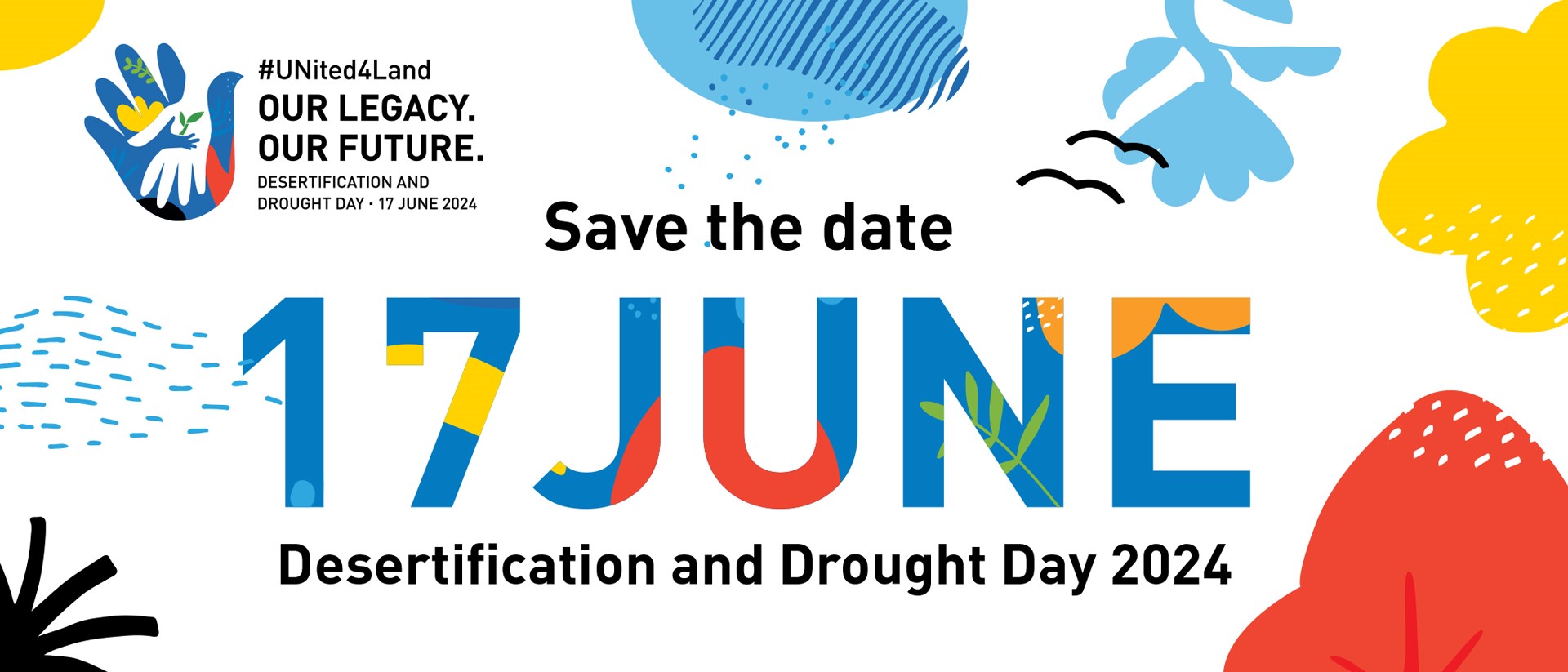Desertification and Drought Day
Desertification and Drought Day
The Desertification and Drought Day – until this year known as The World Day to Combat Desertification and Drought is a United Nations observance day held on 17 June each year.
Desertification and Drought Day was officially declared by the UN General Assembly as “World Day to Combat Desertification and Drought" (The resolution A/RES/49/115).
It aims to promote public awareness of international efforts to combat desertification. The day is a unique moment to remind everyone that land degradation neutrality is achievable through problem-solving, strong community involvement and cooperation at all levels.
Desertification
Desertification is the degradation of land in arid, semi-arid and dry sub-humid areas. It is caused primarily by human activities and climatic variations. Desertification does not refer to the expansion of existing deserts. It occurs because dryland ecosystems, which cover over one third of the world's land area, are extremely vulnerable to overexploitation and inappropriate land use. Poverty, political instability, deforestation, overgrazing and bad irrigation practices can all undermine the productivity of the land.
2024 Theme: United for Land. Our Legacy. Our Future
 This year, the theme of the Desertification and Drought Day “United for Land. Our Legacy. Our Future” spotlights the future of land stewardship — our most precious resource to ensure the stability and prosperity of billions of people around the world.
This year, the theme of the Desertification and Drought Day “United for Land. Our Legacy. Our Future” spotlights the future of land stewardship — our most precious resource to ensure the stability and prosperity of billions of people around the world.
Healthy land not only provides us with almost 95% of our food but so much more: it clothes and shelters us, provides jobs and livelihoods, and protects us from the worsening droughts, floods and wildfires.Yet, every second, an equivalent of four football fields of healthy land becomes degraded, adding up to a total of 100 million hectares each year.
Growing word populations, coupled with unsustainable production and consumption patterns, fuel demand for natural resources, putting excessive pressure on land to the point of degradation. Desertification and drought are driving forced migration, putting tens of millions of people each year at risk of displacement.
Of the world’s 8 billion inhabitants, over one billion of young people under the age of 25 years live in developing countries, particularly in regions directly dependent on land and natural resources for sustenance. Creating job prospects for rural populations is a viable solution that gives young people access to eco-entrepreneurship opportunities and at the same time to scale up best practices. Each USD invested in land restoration can yield up to 30 USD in return.
Key messages
- Life on Land is on the Line. The future of our land is at stake. Desertification, land degradation, and drought are among the most pressing environmental challenges of our time, with up to 40% of all land area worldwide already considered degraded.
- Indigenous peoples and local communities, which account for approximately half a billion people in the world, are often disproportionately affected by land degradation.
- Of the world’s 8 billion people, over one billion of young people under the age of 25 years live in developing countries, particularly in regions directly dependent on land and natural resources for sustenance.
- Sustainable land management benefits both nature and economic growth. Every USD invested in land restoration can yield up to 30 USD in return. In many countries affected by desertification, land degradation and drought, agriculture represents a high share of economic revenue. Empowering
youth as innovation engines unlocks the potential for groundbreaking technologies and practices in land restoration.
United Nations Convention to Combat Desertification (UNCCD)
Established in 1994, the United Nations Convention to Combat Desertification (UNCCD) is the sole legally binding international agreement linking environment and development to sustainable land management. The Convention addresses specifically the arid, semi-arid and dry sub-humid areas, known as the drylands, where some of the most vulnerable ecosystems and peoples can be found.
The new UNCCD 2018-2030 Strategic Framework is the most comprehensive global commitment to achieve Land Degradation Neutrality (LDN) in order to restore the productivity of vast expanses of degraded land, improve the livelihoods of more than 1.3 billion people, and reduce the impacts of drought on vulnerable populations to build a future that avoids, minimizes, and reverses desertification/land degradation and mitigates the effects of drought in affected areas at all levels ... to achieve a land degradation-neutral world consistent with the 2030 Agenda for Sustainable Development.
Source: United Nations
Last Modified : 6/7/2024
This topic provides information about World Health...
Provides information about the World Braille Day -...
This topic provides information about Intended Nat...
Provides information about International Day of Cl...
